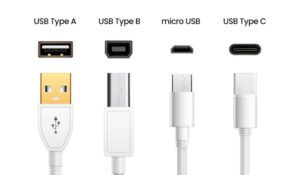Curious about battery cycles? Wondering what exactly is a cycle on a battery? Well, let me give you a quick rundown. A cycle on a battery refers to a single complete charge and discharge process. It’s like a journey for your battery, where it goes from full power to empty and then gets recharged again. Understanding battery cycles is essential to maintain and optimize the lifespan of your batteries. In this article, we’ll delve deeper into what a cycle entails, why it’s important, and how to make the most out of your battery’s cycles. Let’s dive in!
What is a Cycle on a Battery?
A cycle on a battery refers to the complete discharge and recharge process of a rechargeable battery. It represents the lifespan of a battery, indicating how many times it can be fully discharged and recharged before its performance starts to degrade. Understanding cycles is essential for maximizing the lifespan and efficiency of batteries in various applications, from smartphones and laptops to electric vehicles and renewable energy systems.
The Basics of Battery Cycles
In simple terms, a battery cycle occurs when you use up the stored energy in a battery, and then recharge it to its full capacity. Each discharge and subsequent recharge constitutes one cycle. The number of cycles a battery can undergo before its capacity significantly diminishes depends on several factors:
- Battery Chemistry: Different battery chemistries have varying cycle life characteristics. Lithium-ion batteries, for instance, typically have more cycles compared to lead-acid batteries.
- DOD (Depth of Discharge): The depth to which a battery is discharged during each cycle affects its overall cycle life. Shallow discharges (e.g., 20-30%) typically extend the battery’s lifespan compared to deep discharges (e.g., 80-100%).
- Operating Conditions: Factors such as temperature, humidity, and operating voltage can impact the cycle life of a battery. Extreme temperatures, both hot and cold, can accelerate degradation.
- Battery Management: Proper battery management practices, such as using appropriate charging algorithms and avoiding overcharging or over-discharging, can significantly impact the number of cycles a battery can undergo.
Understanding Battery Capacity Fade
As a battery undergoes multiple cycles, its capacity gradually decreases over time. This capacity fade is largely irreversible and is influenced by factors like:
- Chemical Reactions: Internal chemical reactions that occur during charge and discharge cycles result in the degradation of active materials within the battery, reducing its capacity.
- Particle Growth: The growth of crystal structures within the battery can lead to a decrease in active surface area, limiting the battery’s ability to store and release energy efficiently.
- Side Reactions: Undesirable chemical reactions taking place within the battery, such as electrolyte decomposition or the formation of solid-electrolyte interphases (SEI), can contribute to capacity loss over time.
Maximizing Battery Cycle Life
While the gradual capacity fade in batteries is inevitable, there are steps you can take to maximize their cycle life, ensuring optimal performance and longevity. Implementing the following practices can help extend the lifespan of your batteries:
Optimal Depth of Discharge (DoD)
Avoid frequently discharging your battery to its full capacity (100% DoD) whenever possible. Instead, aim for more shallow discharge levels, such as 20-30% DoD. This practice reduces stress on the battery and slows down the capacity fade, prolonging its overall cycle life.
Avoid Extreme Operating Conditions
Batteries perform best within a specific temperature range. Operating them in extreme heat or cold can accelerate capacity loss and increase the risk of irreversible damage. Whenever feasible, keep your battery within the recommended temperature range provided by the manufacturer.
Proper Charging Practices
Follow recommended charging guidelines provided by the battery manufacturer. Avoid overcharging, as it can lead to increased temperature and stress on the battery, potentially shortening its cycle life. Similarly, prevent over-discharging, which can cause irreversible damage to the battery.
Battery Storage
If you plan to store your rechargeable batteries for an extended period, ensure they are stored at approximately 40-60% charge. Avoid storing them in extreme temperatures, as this can negatively impact their cycle life.
Tracking Battery Cycles
To keep track of the battery cycles and monitor their health, many devices and applications provide cycle count information or battery health indicators. Here are a few ways to monitor and manage battery cycles:
Battery Management Systems (BMS)
In applications where batteries are more complex and sophisticated, such as electric vehicles and energy storage systems, a battery management system (BMS) is often employed. A BMS monitors, controls, and balances the charge and discharge of individual cells within a battery pack, ensuring optimal performance and extended cycle life.
Battery Health Apps
For everyday devices like smartphones and laptops, there are various battery health apps available that provide insights into battery cycles, capacity, and overall health. These apps allow users to monitor their battery usage patterns and adjust their charging habits to optimize cycle life.
Understanding what a cycle on a battery is and how it impacts the lifespan and performance of rechargeable batteries is crucial for maximizing their potential. By following best practices, such as shallow discharges, avoiding extreme operating conditions, and proper charging techniques, you can extend the cycle life of your batteries, ensuring they serve you well for a longer duration. Regularly monitoring battery cycles and taking appropriate actions when necessary will help you make the most out of your battery-powered devices and systems.
Frequently Asked Questions
What is a cycle on a battery?
A cycle on a battery refers to the process of going from a fully charged state to a discharged state and then back to a fully charged state again. It encompasses one complete charge-discharge cycle of a battery.
How is a cycle on a battery measured?
A cycle on a battery is typically measured based on the percentage of its capacity that has been used. For example, if a battery has been discharged by 50% and then recharged back to 100%, it would be considered as completing half a cycle.
Why is understanding battery cycles important?
Understanding battery cycles is important because it helps determine the overall lifespan and performance of a battery. Different types of batteries have specific cycle life ratings, indicating how many charge-discharge cycles they can undergo before their capacity diminishes.
Does every battery type have the same cycle life?
No, different battery types have different cycle life ratings. For example, lithium-ion batteries typically have a higher cycle life compared to lead-acid batteries. It’s important to consider the cycle life when choosing a battery for a specific application.
How can I prolong the cycle life of a battery?
To prolong the cycle life of a battery, it is recommended to avoid deep discharges whenever possible and instead charge it regularly. Deep discharges can put additional strain on the battery and reduce its overall lifespan. Additionally, using the battery within its recommended temperature range and avoiding extreme temperatures can also help prolong its cycle life.
Can a battery’s cycle life be extended through maintenance?
While regular maintenance can help optimize the performance and efficiency of a battery, it does not typically extend its overall cycle life. The cycle life of a battery is primarily determined by its chemistry and design, and maintenance practices can only help ensure it operates at its full potential during its lifespan.
Final Thoughts
A cycle on a battery refers to the process of discharging and then recharging the battery. Each cycle represents the complete use of the battery’s stored energy and its subsequent replenishment. This cycling occurs as the battery is used in various devices or systems, such as smartphones, electric vehicles, or renewable energy storage systems. Understanding cycles is crucial in determining a battery’s lifespan and performance, as repeated cycles can lead to degradation and reduced capacity over time. It is important to manage and optimize battery cycles to ensure maximum efficiency and longevity.



